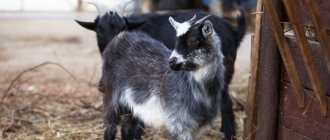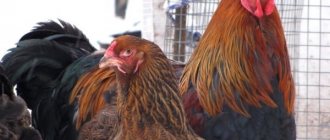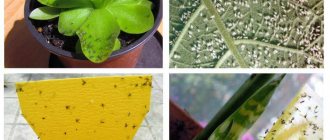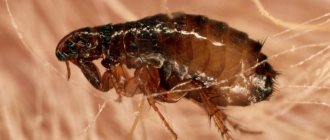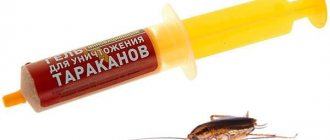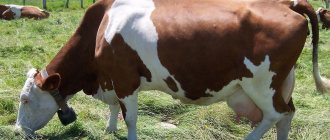Home » Articles about guinea fowl » Volga white guinea fowl
Volga white guinea fowl were bred relatively recently, in the late 80s of the twentieth century. The Siberian white guinea fowl was taken as the basis. The efforts of breeders were aimed at increasing egg production and adapting birds to high and low temperatures. After a successful result, this breed immediately became popular due to its ability to quickly gain body weight. At the same time, the birds had stable immunity to many diseases characteristic of farm birds.
Breed advantages and disadvantages
Speaking about the advantages, it is worth noting first of all the attractive presentation of the carcass. The bird quickly gains weight, is unpretentious in maintenance, eats any feed, which allows you to obtain meat that is soft and good in taste at minimal cost.
Volga white guinea fowl
If we talk about disadvantages, then there is a comparatively low egg production and difficulty in determining sex. If you are a novice poultry farmer, then before purchasing a bird we recommend collecting as much material and information about them as possible. You can learn a lot from the articles collected on our website.
It is important to decide on the breed and direction of breeding, namely what you will breed birds for: for meat, for eggs, or just for beauty. Many experienced poultry farmers recommend starting the breeding of royal birds not by purchasing adult birds, but by purchasing chickens. They are not expensive, and the difference in price between different breeds is insignificant, but preference should be given to those breeds that are better adapted to our climatic conditions.
King bird chicks
One of these breeds is the Volga white guinea fowl, which was bred from the Siberian white (and they, in turn, were bred from the grey-speckled ones) by Omsk specialists. To obtain this, individuals were selected that were distinguished not only by their white feather color, but also by their high productivity.
It is worth knowing that in order to obtain this breed it took many years and the greatest successes were achieved by Stavropol specialists and it was from these places that the breed began to spread to other regions.
Types of guinea fowl
Several species of these birds live in the wild (Africa, Madagascar). They are similar in lifestyle and diet, differing only in appearance.
Representatives of the family feed on insects, grass seeds, sometimes fruits and grass that have fallen from trees. They are not averse to catching a lizard or a frog, even a small snake. They graze in flocks of several dozen individuals, running quickly among the grass.
Guinea fowl lead a sedentary lifestyle, moving within their habitat. They fly well, but make nests on the ground, digging a hole for the eggs in the soil.
From the first hours of life, chicks are able to run quickly, and in case of danger they can freeze and not move for a long time. The variegated color of the down allows the babies to remain invisible in the grass to predators.
Residents of the hot continent tolerate heat and drought well, but are sensitive to dampness and frost.
Ordinary
The ancestor of the entire population of domestic guinea fowl, which still lives in Africa. In another way, the “royal bird” is called “chicken of the pharaohs,” indicating the place of domestication - Egypt.
An ordinary guinea fowl weighs about 2.5 kg, its body length is 50 cm. It has a small, featherless head, with small leathery growths - a horn and a beard, like those of chickens. The legs are long and strong, adapted for long running and raking the soil in search of larvae and roots. The body is covered with feathers of a variegated (speckled) color - white spots on a dark gray background.
The bird lives in steppes and forest-steppe zones, avoiding dense forests. It feeds on insects, grass seeds, and fresh vegetation.
Chubataya
Unlike the common guinea fowl, the shaggy bird is a resident of dense African forests. Leads a secretive lifestyle, nests directly on the ground, digging a small hole for the eggs.
The size of the forelock guinea fowl is smaller than the common one. It has a thick crest of black feathers on its head.
Vulture
The species with the brightest feather color. The back and sides of the bird have the usual speckled pattern for a guinea fowl, but long bright feathers of blue, black and purple colors are visible on the chest and neck.
The head of a representative of this species completely copies the head of a vulture - an elongated shape, a powerful beak and featherless skin. Thanks to this feature, the species was given this name.
White-bellied dark
A species of wild guinea fowl that has almost disappeared due to deforestation. The individual is a small black and white bird (black sides and back, white chest, neck and belly). The head is bare, the skin has a reddish tint.
The white-bellied guinea fowl is listed in the Red Book.
Black dark
A small and little-known species that lives in the tropical forest of equatorial Africa. The plumage of the birds is black, without spots or streaks.
Individuals are medium in size, with high legs, allowing them to move freely among dense vegetation. The head of black guinea fowl is partially feathered - a feathered stripe runs along the crown.
Breed Features
As mentioned above, the color of the carcass is light, which simplifies their implementation.
This bird has a strong immune system and gets sick much less often than birds that are traditionally bred on our farms. The size of the eggs is small compared to chicken eggs, but they can be stored for quite a long time due to the thick, dark-colored shell.
Guinea fowl of this breed are excellent orderlies and eagerly eat various pests and parasites, not disdaining even the Colorado potato beetle.
In some farms they are bred specifically to combat pests that affect gardens and vegetable gardens.
Diseases
Birds naturally have excellent immunity, but if not properly maintained, they are susceptible to colds and infectious pathologies. Common breed diseases include:
- bacillary dysentery - white stools, poor mobility, loss of coordination. There is no treatment, sick birds are sent to slaughter, and all others are given antibiotics as prescribed by a doctor as a preventive measure. Prevention – compliance with sanitary standards;
- mycoplasmosis – heavy breathing, wheezing, fluid from the nose, coughing, sneezing. Treatment with antibiotics – streptomycin, biomycin. Prevention - in the first day of life, drinking Baytril or Enroxil;
- trichomoniasis – yellow foamy diarrhea, thirst, lack of appetite, low mobility. Treatment is possible only in the initial stages - anthelmintic drugs, metronidazole. Prevention – compliance with sanitary standards.
- Parasites
- Infectious
- Other
Worms (helminths)
Roundworms that cause various diseases and, as a result, serious disorders in the body of birds
Read
Pere-eaters
How to deal with them using folk methods? How can I prevent parasites from appearing again?
Read
Mite
Diseases caused by the parasite. Symptoms, treatment, recommendations for prevention
Read
Newcastle disease (pseudoplague)
What is it and how to avoid infection? Main characteristics of the disease
Read
Pullorosis
Description of the disease, symptoms, treatment, preventive measures
Read
Aspergillosis
An infectious disease that affects the respiratory organs and leads to the death of the bird
Read
Psittacosis
Disease with severe respiratory disorders
Read
Salmonellosis
Symptoms of acute and permanent forms of the disease, treatment and prevention
Read
Colibacillosis
How to identify the source of the disease, how to cure a sick bird and immediately take preventive measures?
Read
Smallpox
Causes, symptoms of various forms, preventive measures and treatment methods
Read
Pecking
How does behavior disorder manifest itself, why is pecking dangerous and how to eliminate it?
Read
Rickets
A chronic disease characterized by impaired calcium-phosphorus metabolism
Read
Inflammation of the oviduct (salpingitis)
An inflammatory disease that can be effectively treated in the early stages. How to cure and restore egg laying?
Read
Productivity
The Volga white guinea fowl is an excellent choice for both experienced and novice poultry farmers, as with good productivity they are very unpretentious.
If you pay due attention to this bird, by arranging their maintenance and feeding, you can make a good profit. So, to summarize, the Volga white guinea fowl is distinguished by:
- cream color;
- average egg production, no more than 110 eggs during the year;
- white carcasses. Therefore, they are bought more readily than carcasses of guinea fowl of other breeds;
- The weight of adults is about 2 kg, sometimes more.
- The birds are unpretentious and feel great in any climatic conditions.
Work to improve the breed is currently underway not only in Stavropol, but also in other regions of Russia, as well as in neighboring countries. Under the right incubation conditions, chicks hatch from eggs up to 65 percent. The average weight of an adult bird is up to 1.85 kilograms. The bird reaches a kilogram weight at the age of 2.5 weeks. In order for a bird to gain 1 kilogram of weight, it will need only three kilograms of feed.
Feeding
When kept on an open range in the summer, birds graze on their own, collecting insects and eating fresh greens. When kept in aviaries or cages, it is allowed to use dry types of food for broiler chickens and meat birds. The daily feed intake should be 90 grams.
To speed up weight gain, it is recommended for month-old chicks and older birds to add sprouted grains and sunflower cake to their food . Once a week, it is allowed to use mash with yogurt or whey.
Shell rock should be used as a mineral supplement. It improves the quality of plumage and the condition of the bones and beak. You can also give table salt (0.3-0.6 g/day), meat and bone meal (10 g/day), wood ash or coarse river sand (10 g/day), feed yeast (3-4 g) as mineral supplements. /day).
During the summer, the following feeding scheme is allowed::
- greens – 60 g: nettle or quinoa – 10 g;
- dandelion leaves – 10 g;
- legumes – 20 g;
- cabbage leaves or lettuce leaves – 10 g;
- potato or tomato tops – 10 g;
- millet – 4 g;
In winter, insects are replaced by meat waste and fish offal. Instead of grass, cabbage, beets, carrots, vegetable waste, and sprouted grains are eaten. .
Guinea fowl are fed in much the same way as regular chickens. Food is given on thick cardboard; for two-week-old adolescents - on a shallow plate or low saucer.
On the first day, the diet of guinea fowl consists of boiled chopped eggs, wheat porridge, and ground animal feed. From the third day of life, fresh cottage cheese is introduced with the addition of a small amount of finely chopped greens. On the fifth day, mineral supplements are introduced in the form of crushed chalk or shells.
One-week-old guinea fowl are given a mash of vegetables made with whey or yogurt, and the amount of green food is gradually increased. Three-week-old chickens can be released for walking, however, they continue to be fed with vegetable mash and grain porridge. Young animals are also given crushed insects, gradually increasing their amount in the diet. Month-old birds are given whole live beetles.
External signs
By the name it is already easy to judge the appearance of the Siberian guinea fowl. The bird's body is covered with pure white plumage. The color is not shiny, but slightly matte. Spots of bright white are visible throughout the plumage. They resemble the discolored pattern of a grey-speckled guinea fowl.
Important! The Siberian guinea fowl retains its lush plumage all summer.
Other external signs:
- The small head is covered with rough skin. On the top of the head there is a horn-shaped growth of dull pink color. The earrings are fleshy, bright pink in males, and pale in females. A small beard hangs under the beak.
- The beak is short but powerful. The tip is slightly bent down. The color of the beak is gray-yellow, sometimes pinkish.
- The neck is elongated, the plumage in this area is sparse.
- The physique is large. The length of the body reaches 50 cm. The back and tail form a single plane. The chest is wide, in females it is larger.
- The paws are short but thick. The skin is pink.
- The short tail ends with downward-curved feathers.
- Wings of medium size. The ends of the outer flight feathers are adjacent to the base of the tail when the bird presses them tightly to the body.
It is easier to distinguish a female from a male by its shorter neck length, but enlarged muscular chest.
Maintenance in winter
In winter, guinea fowl should insulate the room and ensure that it is warm and the air temperature does not fall below 18 degrees. It is necessary to clean the room once a month, be sure to replace the old litter with fresh litter as it gets dirty.
Also, birds of this breed need long-term and good illumination, so in winter the lights are not turned off for 12 hours a day.
During this period, guinea fowl are also allowed to be taken for a walk, if the air temperature does not drop below -10 degrees, walking is carried out for a limited time, or the poultry farmer will have to monitor the behavior of the birds.
If they start to huddle together, this indicates that they are cold. Then they are immediately driven into the room.
In winter, the diet of guinea fowls should be complete. Birds are fed 2 times a day.
In the morning, it is allowed to give a mash based on meat waste with sour milk and special means to increase egg production. In the evening, the poultry should be provided with grain and feed.
In the room, be sure to install containers with shells, chalk, and fine gravel. They will also equip a box filled with ash and sand in equal proportions - the guinea fowl will bathe in this mixture.
